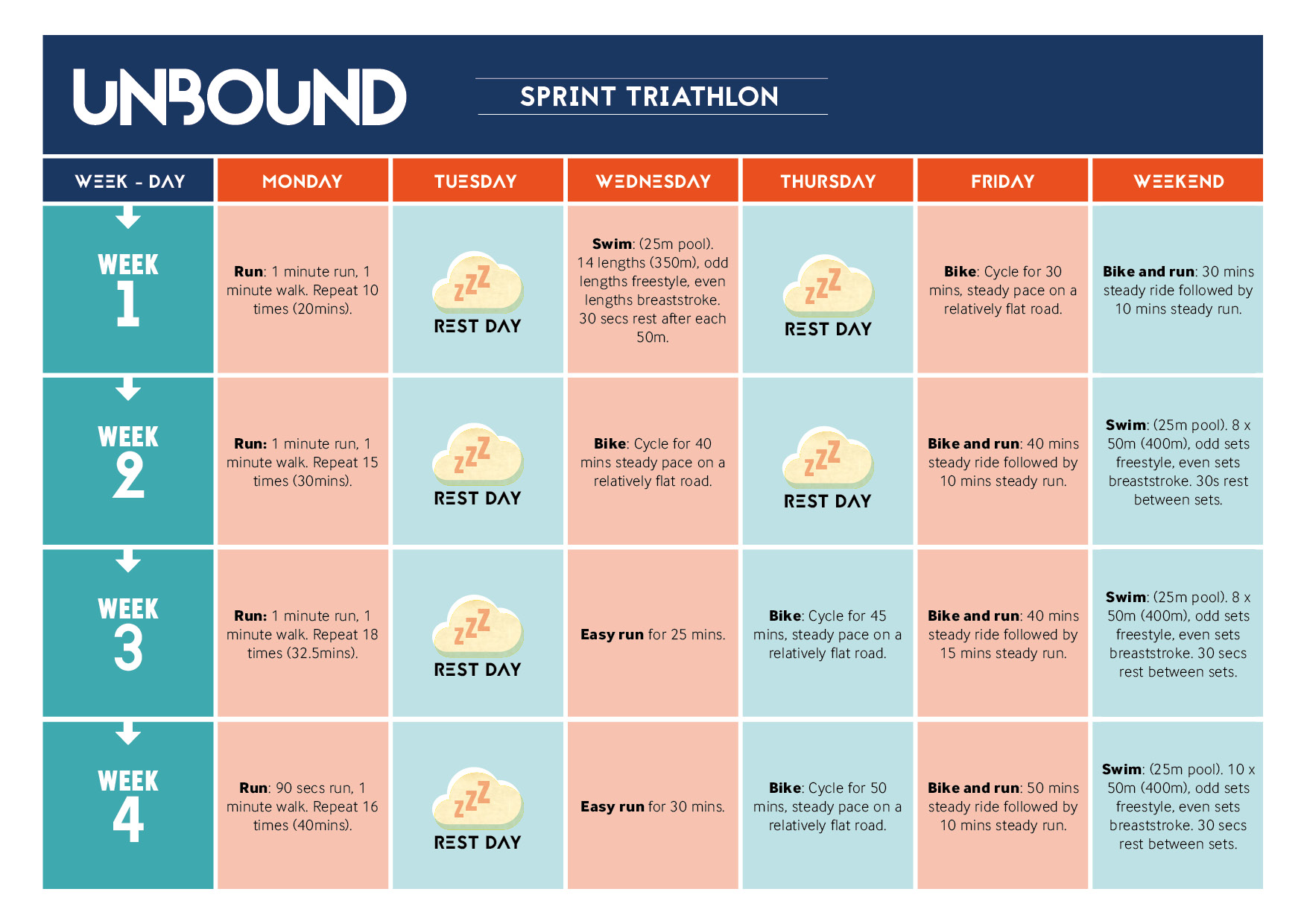Sprint Triathlon Training Plan
Whether it's your first sprint triathlon or your 21st, Unbound will get you to the start line in peak condition
“This six-week training plan will ensure you’re ready to take on a sprint triathlon with ease,” says leading strength & conditioning coach Jonny Jacobs. “It incorporates the three elements of the event, and will get you used to the transition from bike to run. You’ll need access to a local swimming pool and a bike.
“Four to five sessions per week are scheduled – this will get you comfortably crossing the line, leaving no stone unturned by training every element at least once a week. It’s advisable that you can at least run 5k with ease before attempting a triathlon.”
Glossary of terms
Interval training
Repeatedly performing an activity at a high intensity, followed by the same activity at a lower intensity – sprinting then slow jogging, for example. More interval training advice for runners can be found at our dedicated page here.
Easy run/cycle
Running or cycling at a pace where you’re just about able to hold a conversation without gasping.
Front crawl/freestyle
Face-down in the water, alternating your arm-strokes and rotating your head to draw breaths. Regarded as the fastest of the four swimming strokes.
Breaststroke
Keeping your head above water, propel yourself through the water with frog-like movements. The most popular recreational swimming style, breaststroke can be comfortably swum at slower speeds.
For more advice on how to improve your swimming form, see Unbound’s handy Hints and Tips page here.
Mind coaching
Use the fact that it’s a relatively short distance
“The average pace of a sprint triathlon for a first-timer will be anywhere between 90 and 120 minutes – the average length of a film,” says top sports psychologist and space physiologist, Julia Attias. “Try to accurately re-run scenes from your favourite film in your mind, as this provide distraction and help you to break the time into segments.”
Use ‘chunking’
“The good thing about triathlons is that they’re broken up into three sections, allowing your concentration to shift throughout the event,” says Attias. “This means you’re less likely to become bored, and it’s more likely that time will pass you by quicker.
“Use self-talk tactics such as, ‘I won’t be doing this activity for long, because I’ll be doing something else soon.’ During training, this will help break your activities down into segments, making them easier to internalise.”
At the start line, acknowledge your achievements thus far
“Think of how many skills you’ve acquired through your training,” Attias advises. “Be proud of the journey you’ve taken, from your starting point to the start line, where you’re now about to do the event, regardless of how long it takes you. You can even dwell on signing for your next triathlon, to beat the time you’re about to achieve.”


